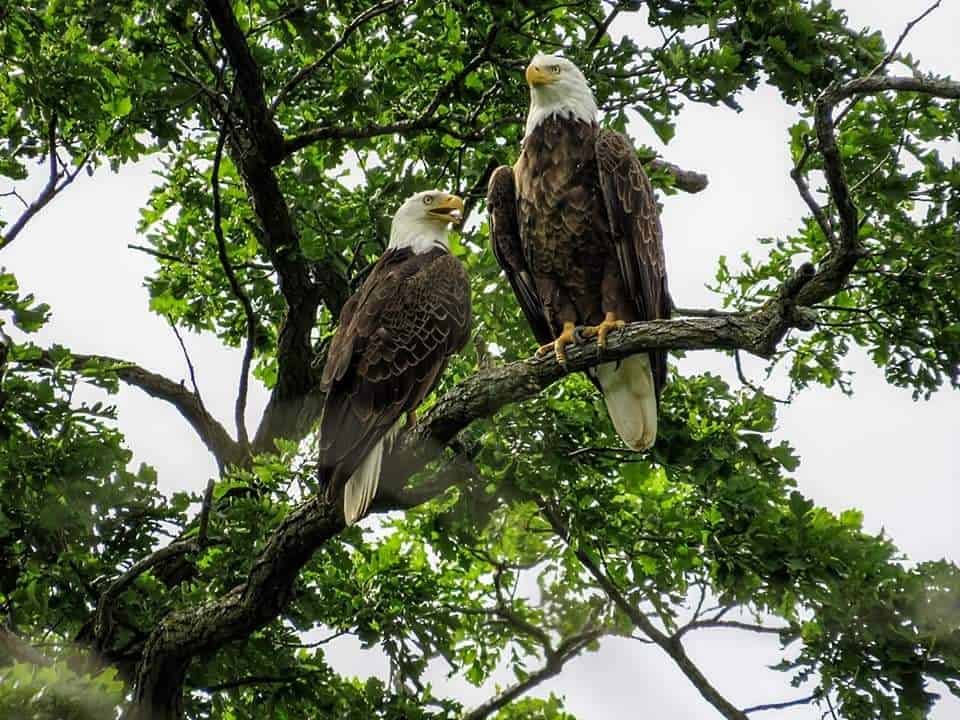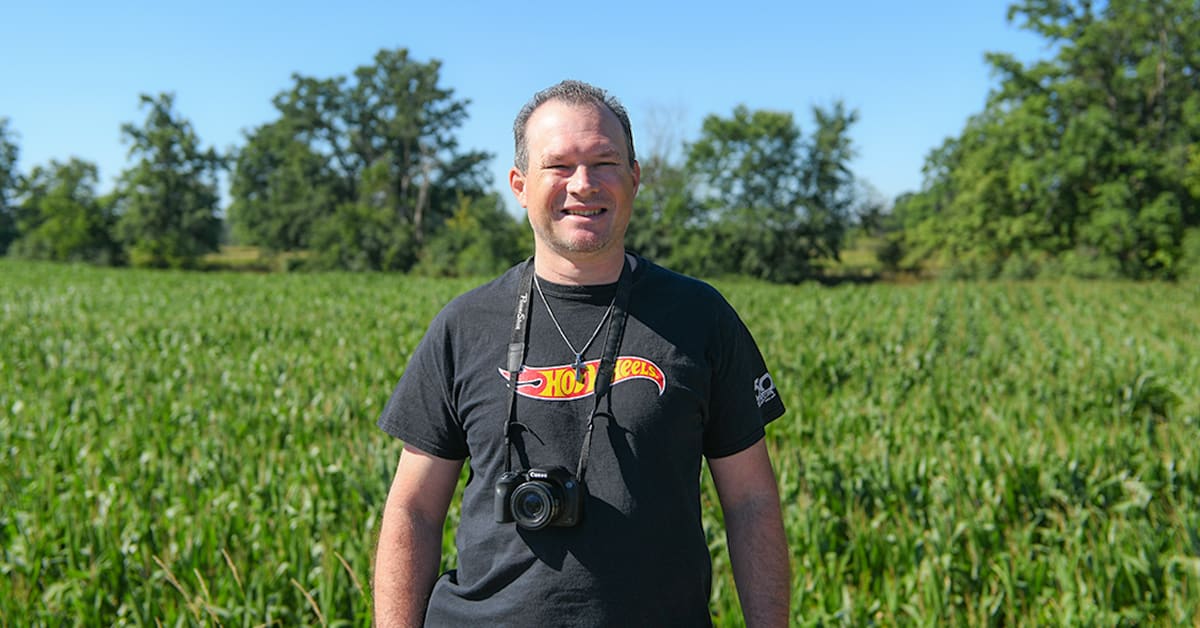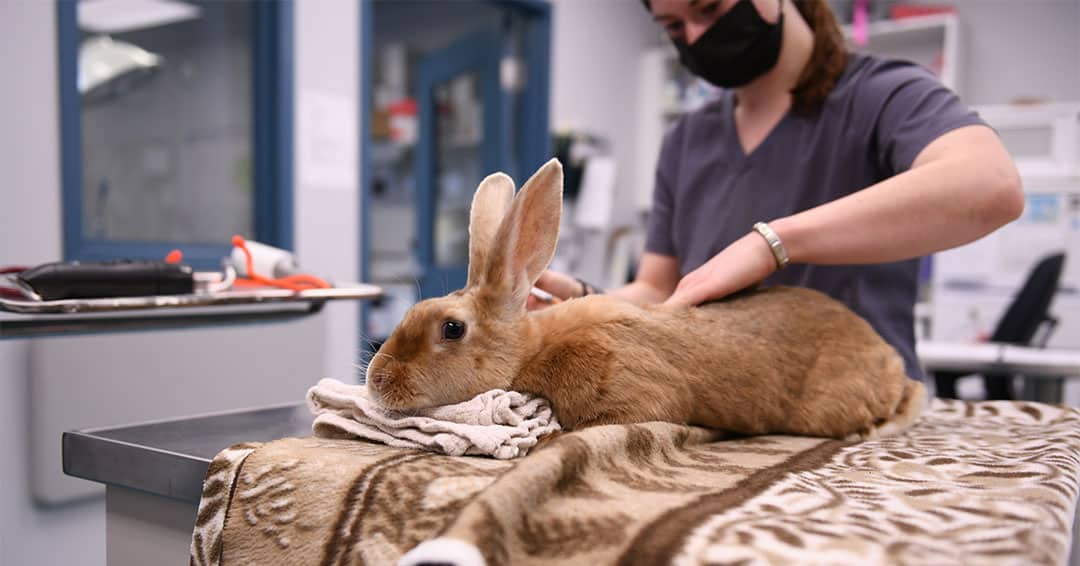Darryl Gingerich says he has always loved eagles. The first time he saw one in person, he was on a trip out east about 15 years ago.
“I came across some eagles out there and I started taking pictures. From there, it’s just always been a fascinating bird for me,” he said.
Back home a few years later, “I saw one heading to church. And I was just like, I couldn’t believe that I saw one in this area and I was so excited.” That was about six years ago, he said.
“From there, I kind of started expanding, trying to do more research, trying to find out where they are, and stuff like that. And then I would be somewhere and I’d see one and I’d take a picture and be like, ‘Oh, this is awesome.’”
Over his years he’s seen them in Kitchener and Waterloo along the Grand River, in Hawkesville and Conestogo, among other places.
He believes bald eagles are possibly becoming more common in the area.
“You just see more and more around, and there’s much more nesting going on in our area. So that is increasing as well, which is really good. And (I’m) seeing a lot of young juvenile eagles as well, which is good. That means that they’re making it past the stage of leaving the nest and learning to survive on their own, so I see them more and more.
“I’ve seen as many as six at one time.”
Lindsay Davidson, a spokesperson for the Ministry of Environment Conservation and Parks confirms that bald eagle populations have increased. “Generally, the population of Bald Eagles has increased significantly in Ontario over the past several decades,” he said.
“In 1973, under previous provincial species at risk legislation, the Bald Eagle was designated Endangered, indicating it faced imminent extirpation (loss) from the province. Estimates from the 1970s suggest fewer than 10 Bald Eagle pairs remained in southern Ontario,” he said.
The bald eagle is currently classified as a species of special concern in Ontario, meaning that it is not currently endangered or threatened but could become so.
Bald eagles’ natural range is throughout northern and southern Ontario, but by the 1960s the bird was mostly wiped from its southern range due mainly to the cumulative effects of a powerful pesticide called DDT, which caused the eagles to produce thin egg shells that would easily break. (DDT and other chemicals like Agent Orange were produced in Elmira from the late 1940s up until 1970, with toxic waste dumped in the ground and into Canagagigue Creek.)
But bald eagle sightings could now be increasing in the area.
The popular birding website eBird reports more than 125,000 cumulative bald eagle sightings in Ontario. The Ontario Field Ornithologists website keeps track of current e-Bird sightings and locations, showing 18 bald eagle sightings south of Sudbury in the last seven days.
Paul Gains, a seasoned wildlife photographer based in Cambridge, says any speculation he has about numbers of bald eagles in the area would be subjective, but he also believes they could be more common.
“It’s not unusual to see bald eagles along the Grand River now,” he said in an email. “I know of several nests in this region.”
During the day, Gingerich works in New Hamburg making all-terrain vehicles at Ontario Drive and Gear Limited, but he gets out to look for bald eagles as often as he can. In the spring, he says he tries to get out about three to four times a week. During the spring or late fall when all the leaves are off the trees are the best times to go looking for bald eagles, because their nests stand out then.
Bald eagles don’t like leaves on the trees around their nests, says Gingerich. He says he has seen them pluck leaves off the branches near their nests.

“As a birdwatcher, I find I’m always looking in the sky,” said Gingerich. “I’m always looking in trees, I’m always looking up. People are like, ‘how do you see all these birds? How do you see this?’ And I’m like, well, what you set your mind to see is kind of what you see. So I’ve just been able to see stuff like that.”
He enjoys going through difficult areas to get the best photos he can and share them with others. He says the best places to look for them are near any of the rivers.
“That’s usually the best place to see them, because they love fish. They’re fishers, so that’s their biggest food (source),” he said.
“I think the biggest thing is that the eagles are starting to come back in this area,” he enthused.









